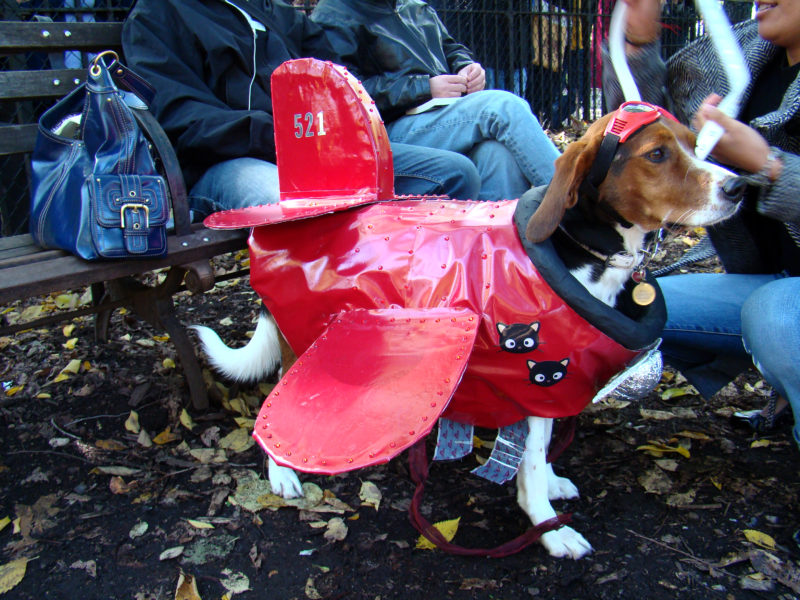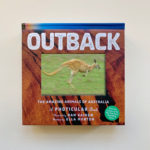Summertime is vacation time for many people, and bringing your dog along can be great fun. Most dogs take well to travel, as long as they have their favorite people with them. Here are some tips for traveling with your dog.

Tips for Hitting the Road With Your Canine
Buckle up: Your dog needs to wear a seat belt or ride in a car seat or carrier that is secured with a seat belt or tether. The back seat is safer for dogs, just as it is for small children. Why does your dog need to be buckled in? Because if you stop suddenly, he could be thrown forward, injuring himself or another passenger. He could also jump out and run into traffic when you open a car door. You can find car seats for small dogs and dog seat belts, which attach to a car’s seat belt, in pet stores and online.
Update his ID: Make sure your dog is wearing a well-fitting collar with an ID tag that contains your cellphone number. (This is a wise idea even at home.) The collar should be tight enough so that it can’t pull over his head but loose enough to slip a couple of fingers underneath.
Pack the snacks: Bring enough of his usual dog food and treats for the entire trip, or check local pet stores online to make sure you can buy his brand and variety once you get to your destination.
Keep him healthy: Don’t forget your dog’s medications, including flea and tick and heartworm protection. Keep prescription products in the original containers so you have the complete drug name, dose, and prescribing vet’s phone number in case you need an emergency refill. Bring along a health certificate from your vet showing which vaccines your dog has had and when they were last given.
Take safe breaks: Would you leave a two-year-old child alone in a car? I sure hope not. You shouldn’t leave your dog alone either—not even for five minutes, not even when it’s cool outside, not even in the shade, with the windows open, in a dog carrier, while he’s sleeping . . . Dogs can develop heat stroke even in mild weather, panic and hurt themselves or destroy the inside of your car, or be harassed, inadvertently or deliberately, by passersby. If you need to stop for food, go to a drive-through or have one person stay with the dog while another goes inside for the food. Need to go to the bathroom? Stop at a gas station and take him in the bathroom with you. Gas station attendants have seen stranger things than a dog in a bathroom, I’m sure.
Keep him comfortable: If your dog drools or vomits when he rides in the car, ask your vet about Cerenia, a prescription medication that blocks nausea for 24 hours. If your dog is anxious but not nauseated during car rides, consider giving him Benadryl (diphenhydramine) about one hour before you leave. Your vet can tell you an appropriate dose for your dog’s weight. A Thundershirt or similar calming wrap; therapeutic treats containing L-tryptophan or milk protein; or a dog-appeasing pheromone collar or spray also might help. VeterinaryPartner.com has an excellent guide to helping acclimate your dog to riding in a car here.

Tips for Flying With Your Pup
Flying rather than driving? You’ll need your dog’s vaccine record and a health certificate signed by your vet. Airlines vary on how many days before a flight they want a dog to be examined, so check before scheduling the vet appointment. Airlines also have rules about what dog carriers they will accept. Basically the carrier should be big enough for your dog to stand up, lie down, and turn around comfortably. Solid-sided plastic or wood dog crates are required for the cargo hold, but sturdy soft-sided carriers are acceptable for inside the cabin. Don’t try to stuff your dog into a carrier that’s too small for him in the hopes of squeezing him under the seat in front of you—the airline could easily refuse to let him on the plane.
Air travel is safer for dogs than it once was, but it shouldn’t be undertaken lightly. Consider whether your dog would be just as happy at home with a pet sitter or in a kennel. If you do fly with your dog, book nonstop flights whenever possible. Choose early-morning or evening flights during hot weather. Don’t give your dog a prescription sedative or tranquilizer before a flight (most airlines don’t permit this anyway), because it could impair his ability to adjust to changing temperatures and air pressure and keep himself upright during changes in altitude or turbulence. Benadryl or the therapeutic treats or pheromone products described above are probably safe, but check with your vet before using them for air travel.
For more tips to keep your pet healthy, happy, and active, check out The Complete Healthy Dog Handbook.





No Comments